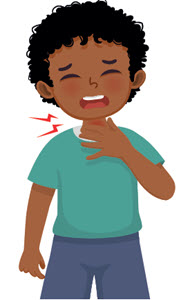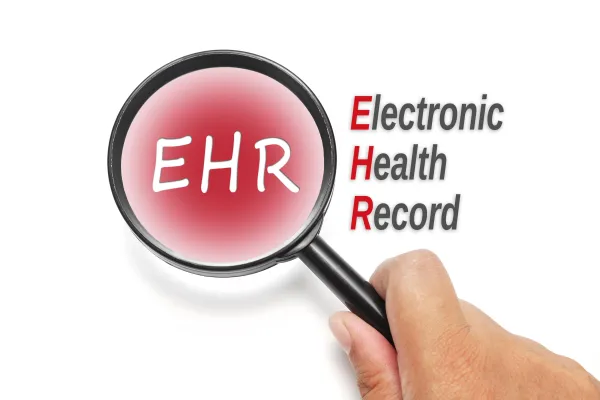Brush Up On Your Coding as Strep Season Continues
Plus: Gain insight into the benefits of observing unusual trends in your practice Though strep throat is most associated with winter months, some pediatric offices saw a high absolute and relative volume of strep throat cases well beyond. The data, which is published in Physician’s Computer Company’s (PCC’s) blog, “Confessions of a Pediatric Practice Consultant” only shows codes used through June, but the trend upward is notable enough to extrapolate that summer is also seeing considerably more cases than in past years. Context: While comparing strep diagnoses over the last 4.5 years, Chip Hart, director of PCC’s Pediatric Solutions Consulting Group in Vermont and author of the blog “Confessions of a Pediatric Practice Consultant,” noticed the use of J02.0 (Streptococcal pharyngitis) is approximately two to four times higher than in 2019 and a notable increase in tonsillitis caused by strep coded to J03.00 (Acute streptococcal tonsillitis, unspecified). “That little upswing in [streptococcal] tonsillitis is really a 10x increase,” according to the data presented in the blog. Published responses to the blog suggest that other offices are seeing similar trends. If your practice is also seeing an unseasonably large number of strep cases during these warmer months, we’re here to help you out. Here’s a coding primer to help you keep up as well as some insider info you can take back to your practice. Know Your Strep Tests When a patient presents with a sore throat, your pediatrician will assess the patient and then order one or more tests to determine the exact cause. Typically, that would be a rapid strep test such as 87880 (Infectious agent antigen detection by immunoassay with direct optical (ie, visual) observation; Streptococcus, group A) or 87802 (… Streptococcus, group B) and possibly a throat culture, such as 87081 (Culture, presumptive, pathogenic organisms, screening only) or 87430 (Infectious agent antigen detection by immunoassay technique ... qualitative or semiquantitative… Streptococcus, group A), if the rapid strep test comes back negative, according to Donelle Holle, RN, president of Peds Coding Inc. and a healthcare, coding, and reimbursement consultant in Fort Wayne, Indiana. Coding alert: If your practice has a Clinical Laboratory Improvement Amendment (CLIA) waiver and you can perform the tests in-house, don’t forget to add modifier QW (CLIA waived test) to 87880. To find out if your in-house lab can perform a particular test under your CLIA waiver, search the CLIA database by test system or manufacturer, or use the drop-down menu to find the analyte name, by going to: https://www.accessdata.fda.gov/ scripts/cdrh/cfdocs/cfCLIA/Search.cfm?sAN=0. Recall the Strep Codes If the strep test comes back positive, your main diagnosis code choice would be J02.0. ICD-10 differentiates streptococcal pharyngitis (inflamed throat caused by streptococci bacteria), laryngitis (hoarseness or loss of voice), and tonsillitis (tonsils that are inflamed/infected), so you could even possibly report J04.0 (Acute laryngitis), which will require an additional code from B95-B97 (Bacterial and viral infectious agents). Know When You Need an Additional Code The most common cause of tonsillitis is strep, so that detail often needs to be identified with an additional code, per ICD-10 guidelines. So, while you would report acute tonsillitis due to the streptococcus bacterium with its own code, J03.0- (Streptococcal tonsillitis), ICD-10 guidelines direct you to use an additional code such as B95.0 (Streptococcus, group A, as the cause of diseases classified elsewhere) B95.3 (Streptococcus pneumoniae as the cause of diseases classified elsewhere), and B95.5 (unspecified streptococcus as the cause of diseases classified elsewhere) in some cases. Coding alert: When dealing with chronic tonsillitis specifically, understand that “chronic” means the continuation of symptoms, which could be due to tobacco use, dependence, or exposure. If these are details you see in the patient record, they’re important details to include. That might include such codes as Z77.22 (Contact with and (suspected) exposure to environmental tobacco smoke (acute) (chronic)) or P96.81 (Exposure to (parental) (environmental) tobacco smoke in the perinatal period). Look for Infectious Agents The root cause of the sore throat is often not known, at least not right away. However, if it is known, it’s a detail you’ll need to include. Remember, you always want to code to the highest specificity. If the provider noted the condition as acute and strep is the cause, select one of the two acute tonsilitis codes that represent strep as the cause: J03.00 (Acute streptococcal tonsillitis, unspecified) and J03.01 (Acute recurrent streptococcal tonsillitis). The one you select will depend on whether the provider noted the condition as recurrent. Remember, chronic tonsillitis is coded to J35.0-. The J03.- codes mention J35.0- as an Excludes2 condition, meaning both codes can be reported together. You may need to inform or remind the provider that the more specifics they can offer about the diagnosis, the better, both for accurately treating the patient and to help the practice receive the proper reimbursement. Analyze Unusual Trends in Your Practice Noticing trends, such as a persistent uptick in strep well beyond what’s common, can be helpful for patient care. You want to be sure you have sufficient resources, including staff and medications, to handle unseasonable demand. “If you realize there’s an uptick in a particular clinical segment, like a lot of kids are getting strep and returning three weeks later, it’s a good time to review all of the workflows for that particular issue,” said Hart. This might include putting checks in place to ensure the billing process is efficient and preparing information for your patient base about precautions they can take and ways they can help manage their own symptoms. Not only does awareness of unusual trends help your own practice, but it can also help aid in public health. Sharing this kind of data (while maintaining patient privacy) can help public health officials track disease trends and help neighboring practices prepare for similar patient patterns. To see the numbers for yourself, check out Chip’s blog: https:// chipsblog.pcc.com/the-rise-of-strep.




